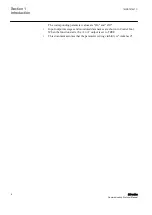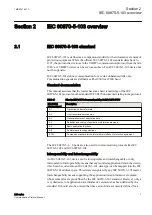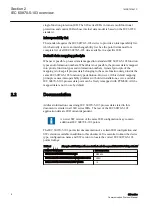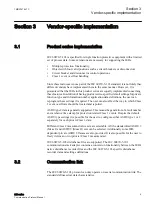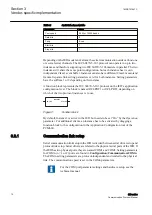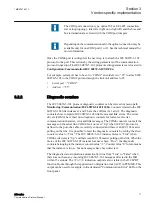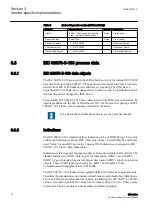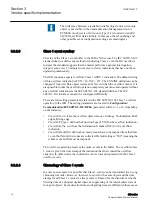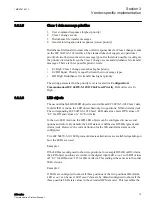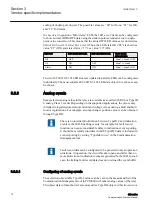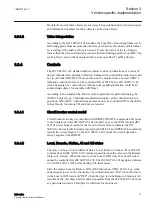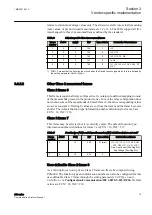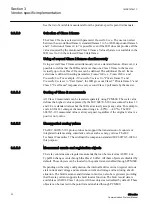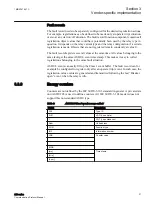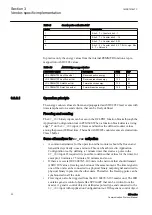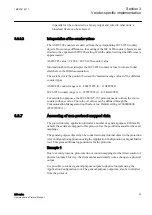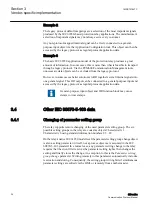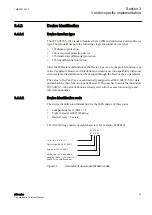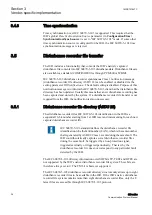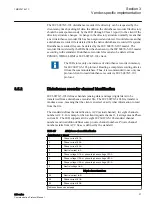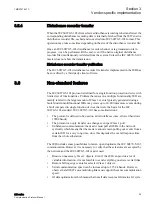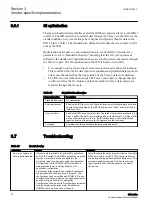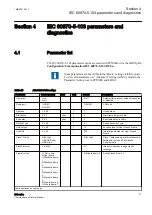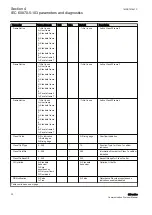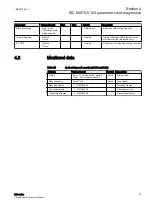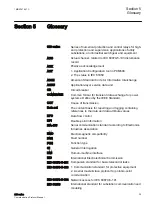
See the list of available measurands from the product-specific point list manuals.
3.3.5.3
Selection of Class 2 frame
The Class 2 frame is selected with parameter
Frame1InUse n
. The user can select
between the user-defined frame 0, standard frames 1 to 5, or IED-dependent frames 6
and 7. Selection of frames 0 to 7 is possible even if the IED does not produce all the
values required by the mentioned Class 2 frames. Values that are not available in the
IED is set to 0 in the selected Class 2 data frame.
Using of several Class 2 frames simultaneously
Using several Class 2 frames simultaneously is not a standard feature. However, it is
possible to define that the IED sends more than one Class 2 frame to the master.
Actually up to four Class 2 frames can be defined. The additional Class 2 frame
selections is defined in setting parameters
Frame2InUse n
,
Frame3InUse
and
Frame4InUse
. For example, if
Frame1InUse
is set to "Private frame 6" and
Frame2InUse
is set to "User frame", the IED gives out Class 2 "Private frame 6" and
Class 2 "User frame" responses to every second Class 2 poll made by the master.
3.3.5.4
Scaling of Class 2 measurands
All Class 2 measurands can be rescaled separately using PCM600. The scale value
defines the highest value expressed by the IEC 60870-5-103 measurand. Values 1.2
and 2.4 are standard values but the IED can actually accept any value. For example,
scale 4.0 for IL1 enlarges the measurand range to -4.0*In…+4.0*In. The IEC
60870-5-103 measurand value is always signed, regardless if the original value is a
positive only value.
3.3.5.5
Unsupported analog values
The IEC 60870-5-103 protocol does not support the transmission of counters or
integrated totals meaning cumulative values such as energy values. The IEC
Technical Committee 57 has defined the companion standard IEC 60870-5-102 for
this purpose.
3.3.5.6
Measurand events and registration objects
The relay contains some regular measurands that can be received as ASDU 4 or
TypeID 4 change events through the Class 1 buffer. All these objects are disabled by
default. These objects can be located in the point list and enabled through PCM600.
Depending on the relay configuration, the internal fault record can register various
start current and voltage and maximum current and voltage values during a fault
situation. The fault reactance and distance to fault can also be registered, providing
that the relay variant supports the fault locator function. The fault record data is
available as ASDU 4 Class 1 objects. All these objects are disabled by default. These
objects can be located in the point list and enabled through PCM600.
Section 3
1MRS757647 C
Vendor-specific implementation
20
620 series
Communication Protocol Manual
Summary of Contents for Relion 620 Series
Page 1: ...RELION PROTECTION AND CONTROL 620 series IEC 60870 5 103 Communication Protocol Manual...
Page 2: ......
Page 40: ...34...
Page 43: ...37...

